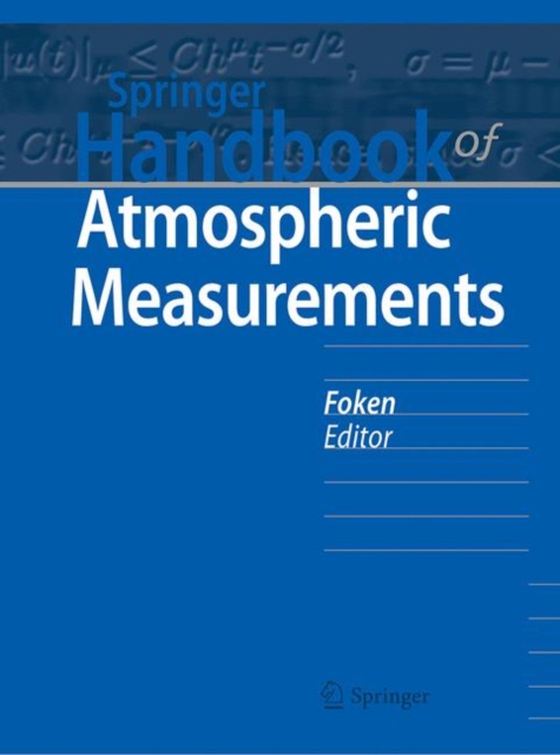
Springer Handbook of Atmospheric Measurements e-bog
2921,57 DKK
(inkl. moms 3651,96 DKK)
This practical handbook provides a clearly structured, concise and comprehensive account of the huge variety of atmospheric and related measurements relevant to meteorologists and for the purpose of weather forecasting and climate research, but also to the practitioner in the wider field of environmental physics and ecology. The Springer Handbook of Atmospheric Measurements is divided into six ...
E-bog
2921,57 DKK
Forlag
Springer
Udgivet
9 november 2021
Genrer
PDD
Sprog
English
Format
pdf
Beskyttelse
LCP
ISBN
9783030521714
This practical handbook provides a clearly structured, concise and comprehensive account of the huge variety of atmospheric and related measurements relevant to meteorologists and for the purpose of weather forecasting and climate research, but also to the practitioner in the wider field of environmental physics and ecology. The Springer Handbook of Atmospheric Measurements is divided into six parts: The first part offers instructive descriptions of the basics of atmospheric measurements and the multitude of their influencing factors, fundamentals of quality control and standardization, as well as equations and tables of atmospheric, water, and soil quantities. The subsequent parts present classical in-situ measurements as well as remote sensing techniques from both ground-based as well as airborn or satellite-based methods. The next part focusses on complex measurements and methods that integrate different techniques to establish more holistic data. Brief discussions of measurements in soils and water, at plants, in urban and rural environments and for renewable energies demonstrate the potential of such applications. The final part provides an overview of atmospheric and ecological networks.Written by distinguished experts from academia and industry, each of the 64 chapters provides in-depth discussions of the available devices with their specifications, aspects of quality control, maintenance as well as their potential for the future. A large number of thoroughly compiled tables of physical quantities, sensors and system characteristics make this handbook a unique, universal and useful reference for the practitioner and absolutely essential for researchers, students, and technicians.
 Dansk
Dansk

